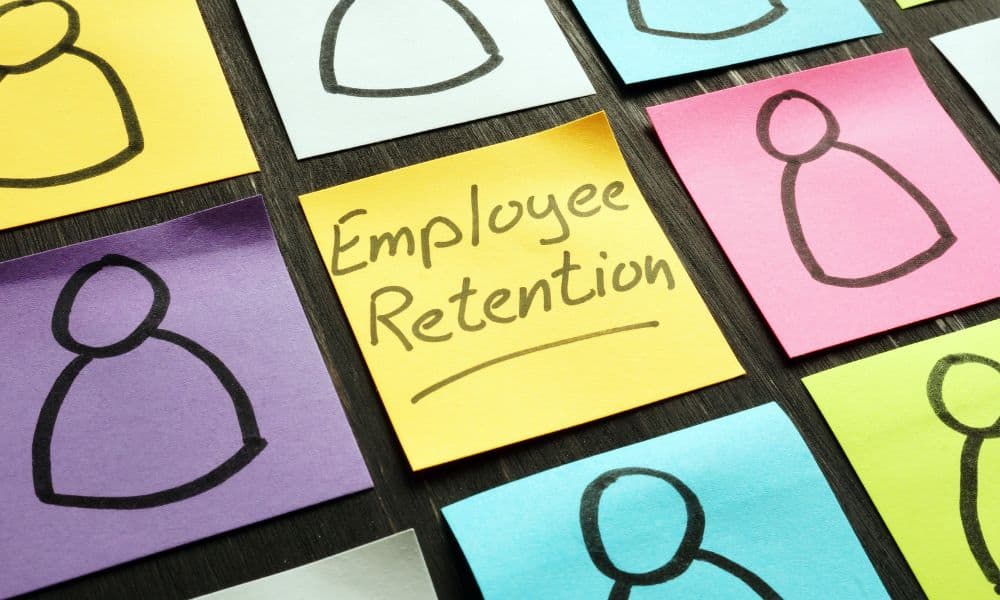In the business world, the cost of losing employees can hit a company’s bottom line hard. High employee turnover isn’t just a headache for HR—it’s a significant financial burden. Employee retention, on the other hand, offers a clear path to maintaining a healthy budget. By focusing on strategies that keep valuable employees happy and engaged, companies can save substantial amounts of money that would otherwise be spent on recruiting, training, and onboarding new hires.
The employee retention impact on budget cannot be understated; it’s an investment in the company’s future. While high employee turnover not only drains resources but also damages team dynamics, disrupts the corporate culture, and leads to the loss of institutional knowledge.
This blog will explore how retaining employees can lead to major savings for your organization and why it’s a crucial element in any successful business strategy.
1. Reduced Recruitment Costs
Recruitment can be one of the most expensive processes in managing a business. Each time an employee leaves, the company faces the costly task of finding and onboarding a replacement.
Understanding Recruitment Costs
One of the most immediate ways employee retention saves money is by reducing the need for constant recruitment. Advertising job openings, paying agency fees, and dedicating time and resources to screening candidates all come with a hefty price tag. Companies that prioritize retention strategies, such as offering competitive salaries, employee health benefits, flexible work schedules, and career development opportunities, can keep their valuable employees and minimize these recruitment expenses.
Costs of Onboarding New Employees
Bringing a new employee up to speed is another costly endeavor. Training programs, orientation sessions, and the initial dip in productivity during the onboarding process can strain a company’s budget. By focusing on retention, companies can avoid the frequent onboarding of new employees, thereby reducing these costs and maintaining a higher level of productivity.
Long-Term Financial Impact
Employee retention extends beyond immediate savings. Retaining employees means saving on recruitment and onboarding costs while also preserving the institutional knowledge and expertise that long-term employees bring to the table. This not only reduces the overall turnover cost but also strengthens the company’s competitive position in the market. By fostering a positive workplace environment and implementing effective strategies to increase employee retention rates, companies can ensure a more engaged workforce and a healthier bottom line.
2. Enhanced Productivity
Productivity is one of the most valuable assets a company can cultivate, and employee retention plays a crucial role in enhancing it. When employees stay with a company, they become more efficient and effective in their roles, driving better results for the business.
Impact of Experience on Productivity
Long-term employees bring a wealth of experience that directly impacts their productivity. As tenure increases, so does an employee’s efficiency in their role. Over time, employees develop specialized skills that enable them to perform their tasks more quickly and with higher quality. This skill development translates to a more productive workforce, where experienced employees contribute significantly to the company’s goals.
Reduced Disruption
Retaining employees also minimizes workflow interruptions, which can be costly to a business. When employees leave, projects can stall, and the remaining team members may struggle to pick up the slack. Consistent employee retention ensures that projects remain on track and that disruptions are kept to a minimum, allowing for smoother operations and better project management outcomes.
Team Cohesion and Collaboration
A stable workforce fosters stronger team cohesion and collaboration. When employees work together over time, they build trust and improve communication, leading to a more harmonious and effective team dynamic. This increased collaboration not only enhances productivity but also contributes to a positive workplace environment where employees feel valued and engaged.
3. Lower Training and Development Costs
Training and development are necessary investments for any company, but these costs can be significantly reduced with strong employee retention strategies. By focusing on keeping employees long-term, businesses can lower the expenses associated with bringing new hires up to speed and maximize the return on their training investments.
Initial Training Investments
Training new hires is a costly process that requires significant resources. From the initial training sessions to the materials and time needed for skill acquisition, companies invest heavily in getting new employees up to speed. Retaining employees means that these initial investments are made less frequently, allowing companies to allocate their resources more efficiently.
Ongoing Development for Existing Employees
For employees who stay, ongoing development becomes a more cost-effective endeavor. Internal training programs, employee recognition programs, mentorship, and coaching can be tailored to build on existing skills, rather than starting from scratch. These development efforts not only enhance employee satisfaction but also help employees grow within the company, reducing the need for external hiring and lowering overall training costs.
ROI of Continued Employee Development
Investing in the continued development of existing employees offers a strong return on investment. By maximizing employee potential through targeted training and development programs, companies can unlock long-term financial benefits. This approach not only leads to a more skilled and capable workforce but also ensures that the company remains competitive in a rapidly changing market.
4. Improved Customer Satisfaction
Retaining employees doesn’t just benefit your internal operations—it also has a significant impact on your customers. When employees stay with a company, they build relationships with customers, provide consistent service, and contribute to higher levels of customer satisfaction.
Consistency in Customer Service
Employees who remain with a company for a longer time are better positioned to build strong, long-term relationships with customers. Their deep knowledge of the company’s products, services, and processes allows them to offer more personalized and effective support. This consistency is key to maintaining high levels of customer satisfaction, as clients appreciate working with knowledgeable and experienced staff who understand their needs and can offer solutions quickly.
Reduced Errors and Complaints
Experience is an important factor in delivering high-quality customer service. Long-term employees are less likely to make errors and are better equipped to handle complex situations. This leads to fewer customer complaints and a smoother service experience. By providing reliable service, businesses can retain customers more effectively, reducing the costs associated with acquiring new clients and improving overall customer retention rates.
Financial Benefits of Customer Loyalty
Satisfied customers are more likely to become repeat clients, which translates into significant cost savings for businesses. Retaining customers through consistent and reliable service reduces the need for expensive marketing campaigns to attract new customers. Additionally, loyal customers often spend more over time, directly impacting sales and revenue. By doing employee retention strategy, companies can ensure that they maintain a knowledgeable and stable workforce that contributes to long-term customer loyalty and financial success.
5. Enhanced Corporate Culture and Morale
A strong corporate culture is the foundation of a successful business, and employee retention plays a vital role in cultivating this environment. When employees stay with a company, they contribute to a positive workplace atmosphere, boost morale, and help attract top talent.
Impact of Stability on Workplace Atmosphere
Stability within the workforce creates a positive work environment where employees feel valued and engaged. When employees are satisfied with their roles and feel secure in their positions, they are more likely to contribute to a collaborative and supportive workplace atmosphere. This, in turn, leads to higher levels of employee engagement and satisfaction, which are key drivers of productivity and overall business success.
Reduced Absenteeism and Presenteeism
Employees who feel valued and are satisfied with their work are less likely to take unnecessary sick days or be present but unproductive. This reduction in absenteeism and presenteeism has a direct financial impact on the company, as it minimizes disruptions and ensures that the business operates smoothly. Retained employees are also more likely to take care of their health and well-being, further reducing the costs associated with absenteeism.
Attracting Top Talent
A company known for its strong corporate culture and high employee retention rates will naturally attract top talent. Skilled job seekers are drawn to workplaces with a reputation for valuing and investing in their employees. This not only reduces the costs associated with attracting and hiring new talent but also ensures that the company continues to build a team of skilled and motivated employees.
Maximizing Savings Through Employee Retention
Investing in employee retention isn’t just about keeping your workforce happy—it’s a strategic move that can lead to substantial savings and long-term business success. By focusing on reducing recruitment costs, enhancing productivity, lowering training expenses, improving customer satisfaction, and fostering a strong corporate culture, companies can protect their budgets while creating a positive and engaging workplace. Prioritizing employee retention is not just a smart financial decision; it’s a commitment to the growth and stability of your entire organization.




